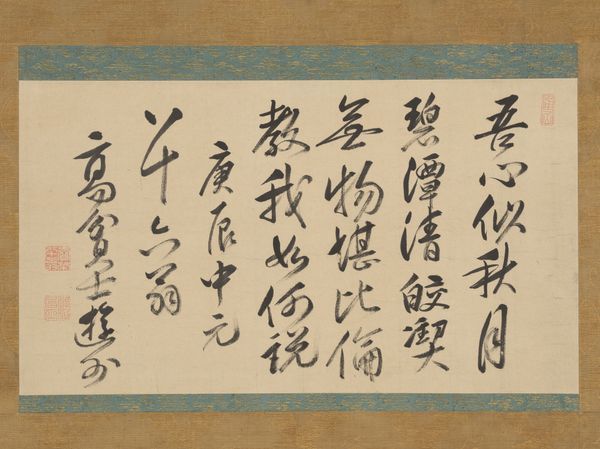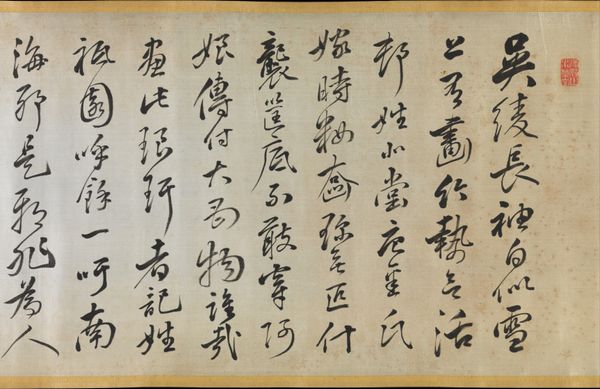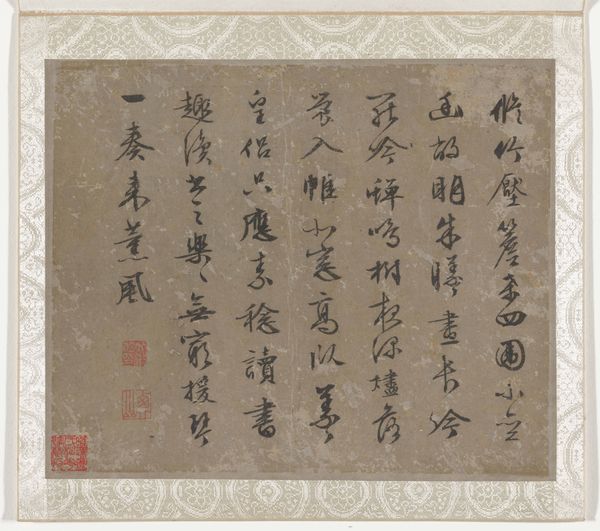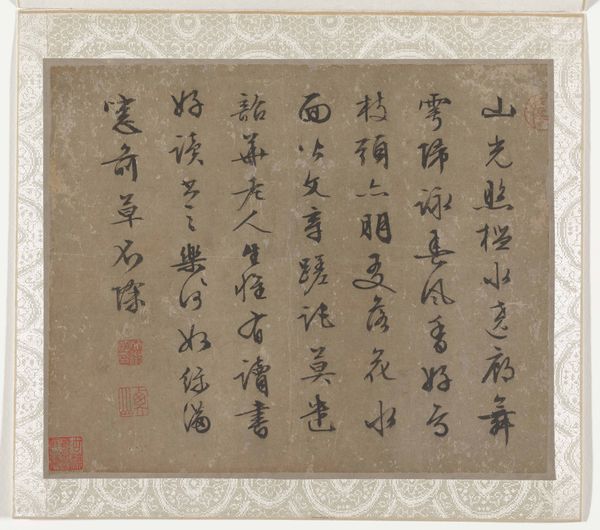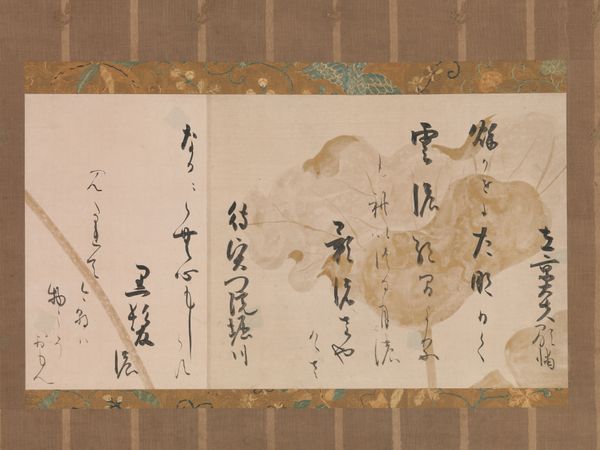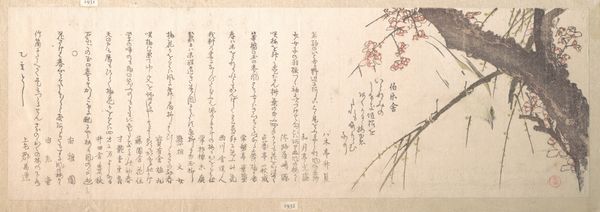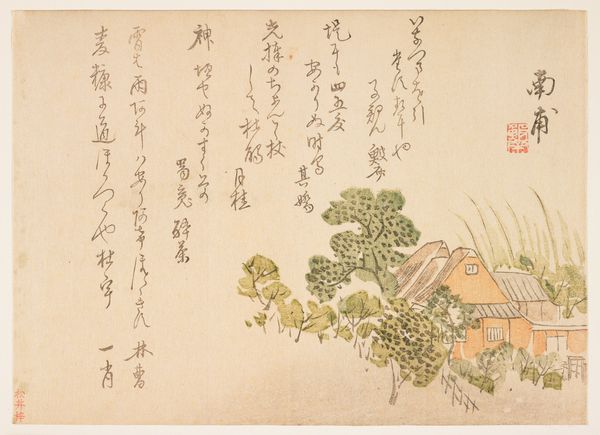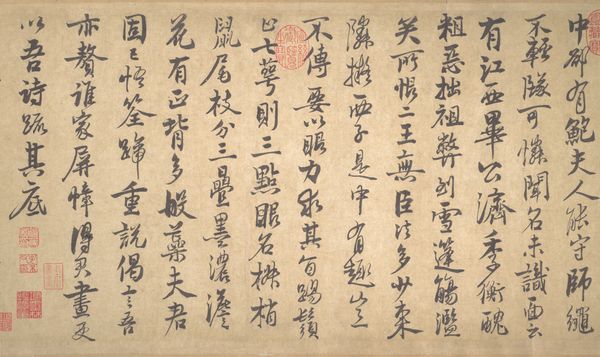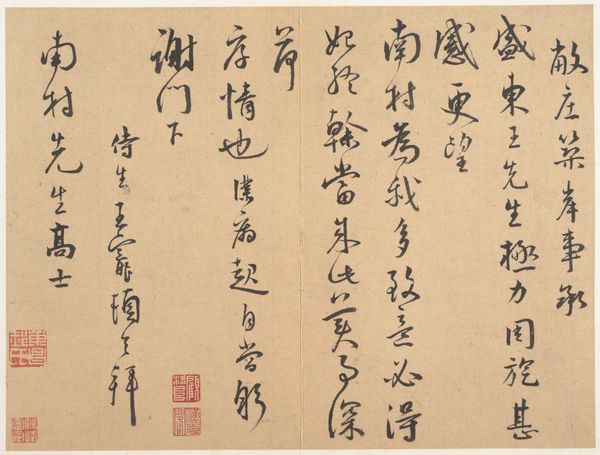
Poems on “Wind” from Japanese and Chinese and Poems to Sing 1670
0:00
0:00
drawing, paper, watercolor, ink
#
drawing
#
asian-art
#
landscape
#
ukiyo-e
#
paper
#
watercolor
#
ink
#
orientalism
#
abstraction
#
line
#
watercolour illustration
#
calligraphy
Dimensions: Image: 10 5/8 × 16 3/8 in. (27 × 41.6 cm) Overall with mounting: 46 × 21 1/8 in. (116.8 × 53.7 cm) Overall with knobs: 46 × 23 1/4 in. (116.8 × 59.1 cm)
Copyright: Public Domain
Horie Yorinao created this hanging scroll, "Poems on 'Wind' from Japanese and Chinese and Poems to Sing," in seventeenth-century Japan. The integration of poetry and painting was a longstanding tradition in East Asia, but here, it takes on new significance within the context of the Edo period. During this time, artistic expression became closely linked with social identity. The rising merchant class increasingly patronized the arts, yet strict social hierarchies still determined what art one could consume or create. Yorinao's work reflects these tensions. The choice of calligraphy points to a refined, scholarly pursuit, aligning with the values of the ruling samurai class. However, the playful rendering of wildflowers hints at a more accessible, perhaps even subversive, sensibility. The poems themselves, referencing both Japanese and Chinese sources, speak to a complex cultural landscape where tradition and innovation coexist. To understand this work fully, we need to look at the literary and artistic conventions of the Edo period, as well as the social and economic forces that shaped artistic production. This scroll reminds us that art is never created in a vacuum, but always in dialogue with its time.
Comments
No comments
Be the first to comment and join the conversation on the ultimate creative platform.
